|
FOCUS / FORUM
INDEX
|
 |
In 2008, the Forum Comment,
was relaunched as the Focus
reflecting the closer comment from
NEMP and the panel of educators. |
 |
|
Main Index for Focus / Forum
Introduction
to Focus / Forum
He
Whakaputanga Whakaaro –
Introduction for Mäori
Medium forums
|
| Forums by year of assessment |
|
|
|
Science
Art
Graphs, Tables & Maps
|
|
|
|
Music
Aspects of Technology
Reading & Speaking |
|
|
|
Information
Skills
Social Studies
Mathematics |
|
 |
|
Listening
& Viewing
Health & Phys. Ed.
Writing |
|
| Forums for Mäori Medium |
|
|
|
Science
Art
Graphs, Tables & Maps
|
|
|
|
Music
Aspects of Technology
Reading & Speaking |
|
|
|
Information
Skills
Social Studies
Mathematics |
|
 |
|
Listening
& Viewing
Health & Phys. Ed.
Writing |
|
|
|
|
|
 |
|
 |
|
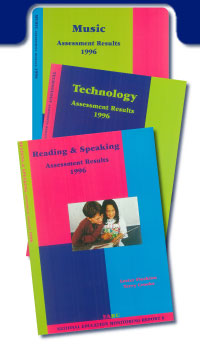
CLICK
on reports above to go directly
to comments |

Click
the Access Task icon for more information about
those tasks which are available to schools.
|
|
|
The Reading
and Speaking, Technology and Music reports are the second
set of reports being presented over the first four-year
cycle of national monitoring. They add to the Science,
Art and Graphs, Tables and Maps reports produced from the
1995 assessments.
Using NEMP reports in schools
The forum’s comments are an initial response to assessment
results from tasks that were designed to find out what students
know and can do in important aspects within major curriculum
areas. These are “national” results which give
a picture of the overall performance of a representative
sample of New Zealand students from a representative sample
of our schools. Individual schools and their communities
may which to consider the forum comments and the assessment
results in relation to their own programmes and student achievement.
FORUM
PARTICIPANTS |
| National
Advisory Committee |
Sandie
Aiken
Jackie Burgon
Tricia Chapman
Peter Corrigan
Amanda Coulston
Cedric Croft
Warwick Elley |
Elizabeth
Eppel
Val Ferguson
Alison Gilmore
Cedric Hall
Terry Hewetson
James Irving |
Ian
Livingston
Tauri Morgan
Denise Ongley
Neil Reid
Jim Strachan
Lynne Whitney |
|
Reading/Speaking
Advisory Panel
Warwick Elley
Ray Griffiths
Juliet Small
Music Advisory Panel
Barbara Auton
Roger Buckton
Cathy Gibbs
Robyn Trinick
Paul Wheeler |
Technology
Advisory Panel
Janet Burns
Mike Forret
Eleanor Hawe
Alister Jones
Peggy Strang
Teacher Administrators
Tim Brenton
Linda Fraser
Brian Fricker
Theodora Holland
Margaret Kennedy |
|
|
|
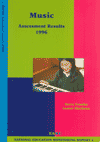 CLICK for
full report CLICK for
full report
|
The
government is to be congratulated for implementing
a comprehensive assessment of the musical understandings
and abilities of year 4 and year 8 students throughout
New Zealand. The music report provides a useful insight
into the present state of music education in our primary
schools.
• The assessment tasks covered a wide range of
musical activities including the skills of listening,
creating, moving, singing, playing, reading and recording.
The results have identified strengths and weaknesses
in student’s musical skills and understandings.
While the report reveals encouraging information about
student’s enthusiasm for the subject, the findings
indicate that there is a need for further development
in the curriculum delivery of musical knowledge and skills.
|
• Music
ranks among the five most popular school subjects for
year 4 students. Overall, year 4 and year 8 students
indicate that music is quite a popular school subject.
Furthermore, musical experiences outside the school are
popular, and a significant number want to carry on their
involvement and interests as they get older. Teachers
need to be aware of this interest and capitalise on it
early.
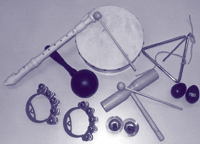 •
To a considerable extent, music transcends ethnic and
gender differences. On most tasks and most questions
in the Music Survey, Mäori and Pacific Island students
responded in a similar way to other students. It is interesting
to note that Mäori year 4 students scored higher
on one singing task, and expressed greater enthusiasm
for singing at school. Girls performed better than boys
on a few of the tasks, and were slightly more enthusiastic
about musical activities at school, but the gap between
girls and boys does not seem to widen between year 4
and year 8. •
To a considerable extent, music transcends ethnic and
gender differences. On most tasks and most questions
in the Music Survey, Mäori and Pacific Island students
responded in a similar way to other students. It is interesting
to note that Mäori year 4 students scored higher
on one singing task, and expressed greater enthusiasm
for singing at school. Girls performed better than boys
on a few of the tasks, and were slightly more enthusiastic
about musical activities at school, but the gap between
girls and boys does not seem to widen between year 4
and year 8.
•
There are no major differences in either performance
or attitudes between students in rural and urban communities,
large and small schools, or full and intermediate schools.
No significant “urban advantage” or “school
size” factor is apparent.
•
Year 8 students in low socio-economic decile schools
had significantly lower scores than students in medium
and high SES schools on about half of the tasks across
all strands. Year 4 students in low socio-economic decile
schools had significantly lower scores than students
in medium and high SES schools on 7 out of 20 tasks across
all strands.
•
Although students are enthusiastic about music, it is
disappointing that they were not showing the benefits
of balanced and structured music programmes. In particular,
there is a need to provide them with greater opportunities
to play instruments, make creative responses and dance
or move to music.
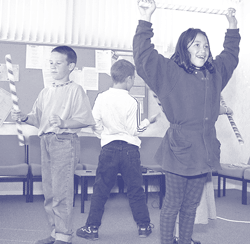 •
Overall, aural skills are weak. More than half the students
surveyed were unable to sing two notes in tune and a
similar number were unable to recognise beat and simple
rhythmic patterns. •
Overall, aural skills are weak. More than half the students
surveyed were unable to sing two notes in tune and a
similar number were unable to recognise beat and simple
rhythmic patterns.
• While Year 8 students demonstrated greater co-operative
group skills, this is not matched by an expected increase
of music performance skills between year 4 and year 8
in almost every area assessed.
• Results of the music survey highlight the importance
of developing a music culture within schools. This requires
a considerable commitment, ongoing teacher development,
resourcing and resourcefulness.
|
|
|
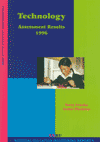 CLICK for
full report CLICK for
full report
|
•
Technology is a new and emerging area of the curriculum.
At the time of the assessments, the new curriculum
was not an official requirement for schools. Even so,
it is of interest that a number of students report
that they have been participating in technological
activities at school.
• From the outset it was decided that the NEMP assessments
would cover aspects of technology rather than attempting
a comprehensive coverage of the full curriculum. This report
is a starting point for the assessment and monitoring of
technology learning outcomes. |
• The tasks demonstrate some of the key approaches
that are characteristic of technological activity. They were
based on authentic and realistic situations, and they reflect
the problem solving approach which is centrally important
in technology education.
• The tasks investigated student’s knowledge
and understanding of technological principles and ideas,
design skills, the ability to evaluate design and design
ideas, and the use of computers.
• Some of the important outcomes require longer to
assess than NEMP assessments allow.
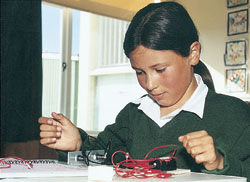 •
Students have a positive attitude towards technology. •
Students have a positive attitude towards technology.
Year 8 students rated technology the 4th most “like” learning
area at school.
• While students identified using computers as part
of technology learning at school, they also recognised that
technology involves much more. Students at both levels noted
that technology included making and designing, modifying
or finding out how things work, using tools, computers or
other equipment.
• Results indicate substantial growth in design skills
between year 4 and year 8.
• The results show that there is little difference
between the achievement of boys and girls on the aspects
of technology that were assessed.
• Students in schools with high proportions of Mäori
and/or with low socio-economic decile ratings had lower levels
of performance than other students on about 40% of the tasks.
However, there were fewer tasks on which Mäori students
did less well than non-Mäori students, so differences
may be more to do with socio-economic factors affecting schools
than ethnicity. |
|
|
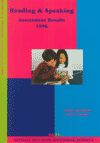 CLICK for
full report CLICK for
full report
|
Because
of the magnitude of the language and literacy area of
the curriculum, it has been divided into two separate
blocks for national monitoring purposes. The desirability
of having a stimulating mix of assessment activities
led to the decision to combine speaking and reading in
one report, and listening and writing in another.
• The overall impression gained from the report is
that the majority of students in our schools have positive
attitudes towards reading and speaking. A wide range of
interesting and challenging tasks was used, and it is not
surprising that most students enjoyed the experience. This ‘enjoyment’
is essential to motivating students to give their best
effort.
|
•
The assessment activities and approaches offer novel and
innovative ways for classroom teachers to conduct their own
assessments in reading and speaking. The reports make available
a wide variety of approaches, ideas and actual items for
school assessment purposes. The inclusion of non-book resources
among a wide range of task materials is especially noteworthy.
 • The
NEMP assessment frameworks provide very useful and well-constructed
models. • The
NEMP assessment frameworks provide very useful and well-constructed
models.
• Most students are competent at reading non-challenging
fiction and non-fiction prose. They are able to answer straightforward
questions when options are provided, but they need more practice
at constructing their own answers.
•
Approximately 80% of students had the technical skills to
read at or above levels we regard as normal for their time
at school.
• On the reading record tasks, students were asked
to read aloud two passages (at their level) to the teacher
administrator. Based on their abilities to read aloud and
retell what they had read, about half the Year 8 students
were reading above their expected level, another 30% at that
level, and 20% below. At year 4, about 60% of students were
reading above their expected level, about 20% at their level,
and another 20% below. Project information shows, however,
that accuracy in oral reading is not a good indicator of
comprehension.
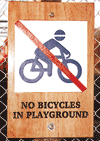 •
Results show that self-correction is not necessarily a good
indicator of comprehension. Good self-correction is related
to the ability to answer lower order comprehension questions
(reading “on the lines”) but it cannot be assumed
that the same applies with higher order comprehension (reading “between
the lines”). •
Results show that self-correction is not necessarily a good
indicator of comprehension. Good self-correction is related
to the ability to answer lower order comprehension questions
(reading “on the lines”) but it cannot be assumed
that the same applies with higher order comprehension (reading “between
the lines”).
• The results show that comprehension skills need to
be taught and practised with all age and ability groups at
both year 4 and year 8.
• On tasks requiring students to locate simple facts
within a fixed time limit, most students perform well on
the early tasks, but poorly on later ones. The reports indicate
that most students do not make efficient use of their time,
but read more of the content and details than is necessary
to answer the questions. This points to a need to teach strategies
for skimming, including the use of the structure of the text
and subtitles to locate information efficiently.
•
It is reassuring to note that although primary schools have
emphasised fiction in their instructional reading programmes,
there is very little difference in student ability to read
fiction, non-fiction and non-book materials. Many students
handle all kinds of material well.
• Encouraging gains are being made by students between
year 4 and year 8 in orally communicating their ideas effectively
and with confidence.
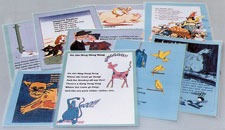
• The ability of students to communicate was generally
higher at year 8 than at year 4. Large numbers of students
at year 4 and year 8 (30 to 40%) were relatively weak in
conveying instructions to perform a task when aids were not
present. Students tend to communicate information better
with the assistance of pictures and tangible objects.
• It is interesting to see that most students enjoy
reading silently. In view of the fact that many are spending
less time reading when not at school, it is important that
teachers allow sufficient time for personal reading during
school hours.
• The survey showed the majority of students enjoy
having books read to them. The value of teachers and others
reading to students is widely recognised and should be actively
encouraged.
• A higher percentage of both year 4 and year 8 students
prefer talking to smaller rather than larger groups. Both
year 4 and year 8 students indicate that they have limited
opportunities for speaking to the whole class. Speaking to
the whole class is disliked by 28% of year 4 students and
39% of year 8 students.
• It is of real concern that 37% of year 4 students
and 54% of year 8 students don’t know how good their
teachers think they are at reading.
•
Schools with high concentrations of Mäori and Pacific
Island students performed at lower levels on reading, but
the discrepancies disappear in speaking tasks, and on the
students’ attitudes to both subjects.

•
About 10% of students sampled at year 4 and year 8 performed
at least three years below their reading age band.
• Girls at both year levels performed better than boys
on most reading tasks and also gave more positive ratings
on the reading survey. Considerable attention needs to be
given to raising the performance of boys to reduce this gender
gap. |
|
 |
|
|